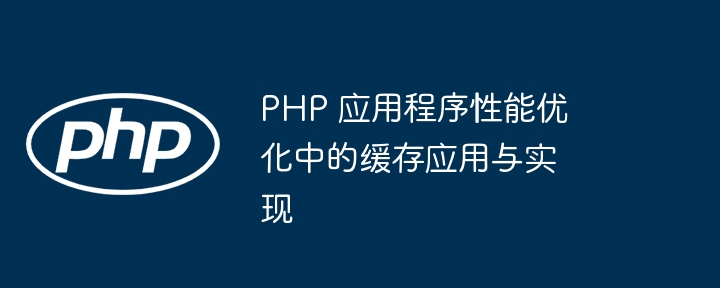
In PHP applications, caching technology improves performance and user experience by temporarily storing frequently accessed data. Common caching strategies include page caching, data caching and object caching. PHP provides a variety of caching technologies, such as file caching, memory caching, and object caching. Using an e-commerce application as an example, this article demonstrates how to use page caching to optimize product pages, reduce database queries, and speed up page loading.

Caching application and implementation in PHP application performance optimization
In modern Web development, caching is an important technology , used to improve the efficiency of PHP applications in terms of performance and user experience. By temporarily storing frequently accessed data, caching can reduce database queries and speed up page loads.
Caching Strategies
In PHP applications, there are several common caching strategies:
Caching Technology
PHP provides a variety of caching technologies to implement these strategies, such as:
Practical Case
Suppose we have a PHP e-commerce application where the product page is one of the most frequently visited pages. To optimize this page, we can use page caching:
// 创建缓存对象
$cache = new Cache();
// 检查缓存中是否存在页面
if ($cache->has('product-page-' . $productId)) {
// 从缓存中获取内容
$pageHtml = $cache->get('product-page-' . $productId);
} else {
// 从数据库中获取数据
$product = getProductDetails($productId);
// 渲染页面
$pageHtml = renderProductPage($product);
// 将页面存储到缓存中
$cache->set('product-page-' . $productId, $pageHtml, 600);
}
// 向浏览器发送已缓存或新渲染的页面
echo $pageHtml;This code checks if there is a cached page. If it exists, the page is read directly from the cache. If it doesn't exist, the data is fetched from the database, the page is rendered, and the page is stored in the cache.
The above is the detailed content of Caching application and implementation in PHP application performance optimization. For more information, please follow other related articles on the PHP Chinese website!